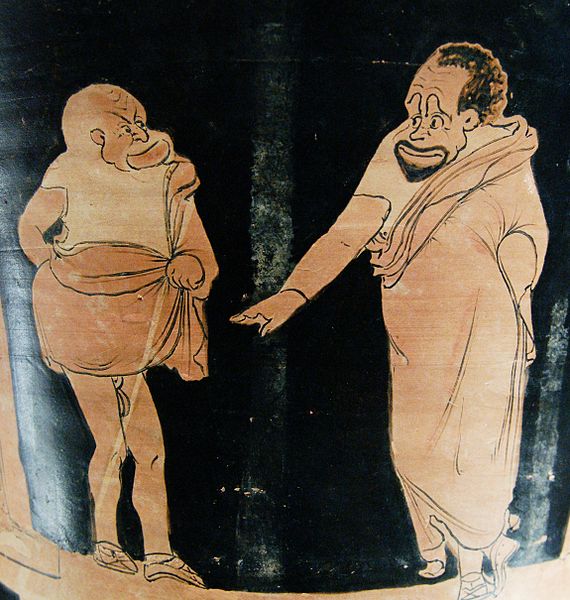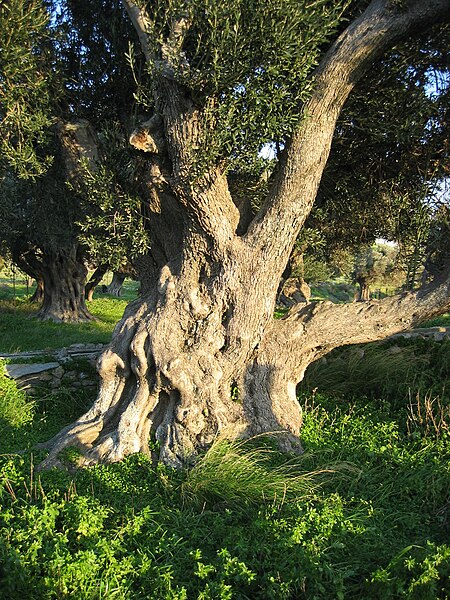Slavery in ancient Greece
Slavery was a widely accepted practice in ancient Greece, as it was in contemporaneous societies. The principal use of slaves was in agriculture, but they were also used in stone quarries or mines, and as domestic servants.
Funerary stele of Mnesarete, daughter of Socrates; a young servant (left) is facing her dead mistress. Attica, c. 380 BC. (Glyptothek, Munich)
A master (right) and his slave (left) in a phlyax play, Silician red-figured calyx-krater, c. 350 BC–340 BC. Louvre Museum, Paris.
Women as plunder of war: Ajax the Lesser taking Cassandra, tondo of a red-figure kylix by the Kodros Painter, c. 440–430 BC, Louvre.
Agriculture, a common use for slaves, black-figure neck-amphora by the Antimenes Painter, British Museum
Agriculture in ancient Greece
Agriculture was the foundation of the Ancient Greek economy. Nearly 80% of the population was involved in this activity.
Harvesting olives. British Museum
An ear of barley, symbol of wealth in the city of Metapontum in Magna Graecia (i.e. the Greek colonies of southern Italy), stamped stater, c. 530–510 BCE
Bronze billygoat found in the deme of Kephissia, 5th century BCE, Louvre
The olive; a foundation of Greek agriculture – here in Karystos, Euboea







